Mount Wars: Guess what? Z-mount really DOES help lens design… and AF! (Nikon technical Q&A)
posted Friday, March 29, 2019 at 6:39 PM EDT
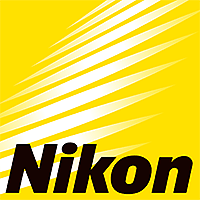
I had a chance to sit down with a group of top Nikon executives and engineering managers last month, as part of my yearly pilgrimage to Yokohama, Japan for the annual CP+ trade show. We talked about lens design and how it's impacted by the new Z-mount -- we're frankly amazed by their new 14-30mm f/4 lens, both for its compact size and the fact that you can use front-element filters with it -- as well as discussing autofocus performance, how their focus on video features affects their plans going forward, and their view of the photo market's prospects over the next few years.
I wouldn't say there were any big surprises, but the discussion of the 14-30mm and how it differs from the 14-24mm f/2.8 for Nikon F-mount was the clearest example I've seen of how the new large-diameter / short flange-distance of the Z-mount helps lens design. I also learned some things about how phase-detection AF systems deal with moving subjects that I didn't know before. (Which also illustrated the importance of the new high-speed digital communication channel that the Z-mount provides between lens and body.)
Read on for the details, and as always, feel free to ask any questions or share any comments you might have in the comments below!
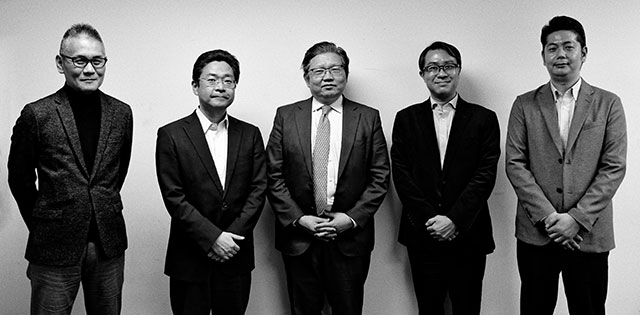
|
Naoki Kitaoka |
Takeshi Suzuki |
Takami Tsuchida |
Akihiko Obama |
Hiroyuki Ishigami |
Dave Etchells/Imaging Resource: Canon Inc.’s Chairman and CEO, Fuji Mitarai, is on record recently as saying that he expected the interchangeable-lens camera business to contract by half over the next two years. Do you agree with what he said about the business changing? What are your projections for how the ILC market will evolve over the next 2-5 years?
Takami Tsuchida/Nikon: Well, the ILC market overall is shrinking, although the mirrorless market has a smaller risk [associated with it]. But we don't expect that this will drop by half.
Dave Etchells: Hmm, hmm.
Takami Tsuchida: Of course, we as a company would like to actually keep this great momentum. This has been [seen] with the traffic at this CP+, especially at this point; even with the very bad weather out there, still so many people are coming. This is a pure proof of people's enthusiasm for the mirrorless market. So we would like to keep launching surprising or exciting products one after another. Full-frame products have been launched by our competitors and ourselves as well. So that has given the momentum to the market as a whole. We would like to keep this momentum going.
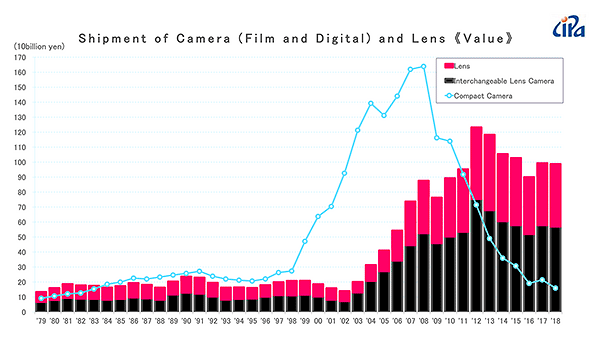
Dave Etchells: What do you project for the next two to five years? How will it evolve, do you think?
Takami Tsuchida: Well, having said that, in a two to five years time range we expect the ILC market will shrink to some extent. Probably some part of the functions that we can provide to our customers with ILCs could be replaced with some additional functions with a smartphone, and that will be happening in the landscape. However, we would like to keep growing and maintaining the size of the business onward through providing a stable [quality] service to our customers. [Ed. Note: It wasn't clear what word the translator was using here, where I inserted "quality". I suspect that "stable" wasn't quite what Tsuchida-san was saying, but the overall gist of what Tsuchida-san was saying seems to be that Nikon expects some market contraction, but there's been a surge of interest with all the recent announcements, and they hope to be able to maintain that momentum going forward.]
Dave Etchells: My next question is about the new Nikkor Z 14-30mm f/4 S lens. It's an interesting lens for a variety of reasons, not the least of which is that it offers a 14mm focal length while still having a filter thread. Can you explain what role, if any, the new Z Mount played in allowing you to make such a wide-angle, wide-aperture lens that still could have a filter thread?
Akihiko Obama/Nikon: So, I'm in charge of wide-angle lens designs. The short flange distance and the large aperture are obviously the [key characteristics] of the product. These two features definitely contributed to the overall design. This is a cross section of the existing model, the 14-24mm f/2.8. <shows diagram> So, the characteristics of this cross section are obviously that the front lens element is much bigger than the back element.
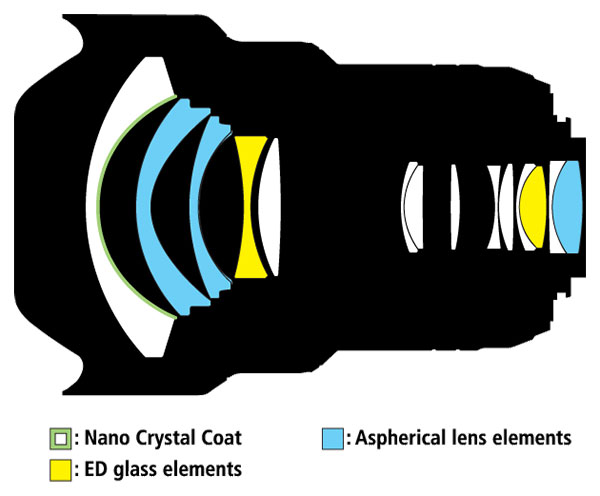
Akihiko Obama: And also, the front lens element is greatly curved. This was actually a characteristic of the SLR lenses. Because we had to [accept] a certain length of backfocus distance, because we had a mirror in between the image sensor and the back side of the lens. We call this a "retrofocus" type of design. And here is the new cross section for the 14-30mm. <shows diagram of the new lens> The sensor to lens distance is way shorter, and we realized a very symmetrical structure. For us as engineers designing a lens, it's really important for us to have this symmetrical formula, because this gives positive contributions to reduce aberration.
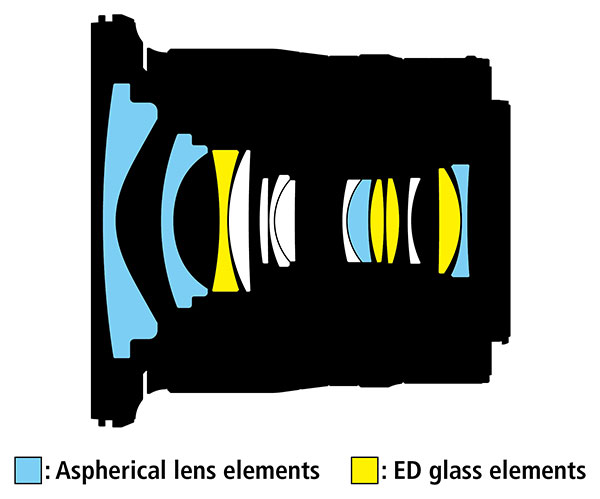
Dave Etchells: Ah, the shorter flange distance and symmetrical design helps with aberration correction, also?
Akihiko Obama: Right, it was easier for us to do aberration correction thanks to the shorter distance. So, maybe in the comparison between the conventional lens and the new one, you can tell that the front lens element is much smaller. The curve gets flatter, enabling us to make it much smaller, and easy to attach a filter on top of it. And another feature is that the back lens is relatively bigger against the inner mount diameter, and this particular structure can only be realized in this arrangement. The Z-mount is actually a great contributor to the downsizing of the camera, of the mount itself, and in pursuing high-performance optical functions, as well as enabling the filter attachment.
Dave Etchells: It seems it's very significant that the larger mount let you use the symmetric design, neh? It's *so* small. [Ed. Note: The new 14-30mm f/4 lens really is surprisingly small for such a wide-angle optic.]
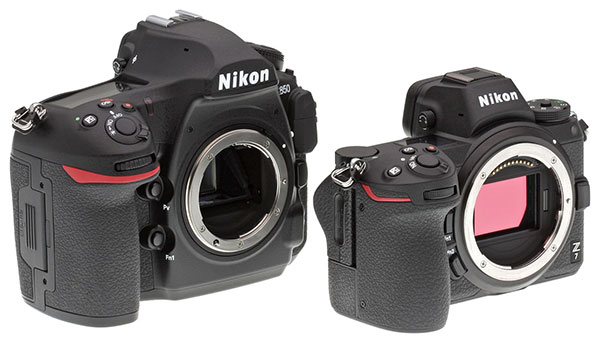
Akihiko Obama: <laughs>
William Brawley/Imaging Resource: Very cool.
Dave Etchells: Yeah. And the rear element. Yes, it is indeed very close to the flange, sugoi! [Ed. Note: That's Japanese for "amazing" or "great"!] :-)
<laughter>
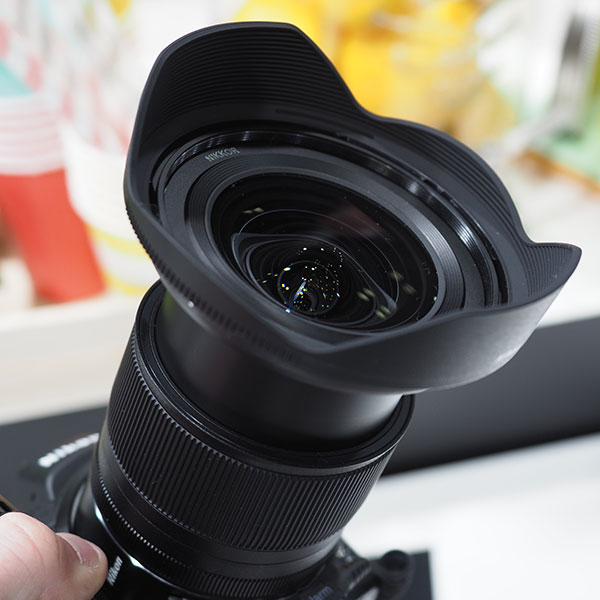
Dave Etchells: To follow up on the last question, can you explain how the new Z-mount will impact the designs of new versions of existing F-mount lenses, namely the upcoming trio of professional 14-24mm, 24-70mm and 70-200mm f/2.8 zooms? What can users expect in terms of the differences in optical quality, autofocus speed and the overall physical design?
Akihiko Obama: As I previously mentioned, it's a more symmetrical arrangement, so users will greatly benefit from the optical advantages.
Naoki Kitaoka/Nikon: And also, this mount system has high-speed communication. [Ed. Note: The Z-mount has new electrical connections that support very high-speed digital communication between the lens and camera body.] That improved the autofocus accuracy and performance. So especially with the 70-200mm f/2.8, users will be able to experience very high speed, accurate and high resolution performance by using this particular product. Even if you have a super telephoto or macro lens, you can still enjoy the same level of benefits or advantages.
Dave Etchells: That's interesting. We are accustomed to thinking of limits for autofocus performance being things like how fast the lens actuator can move; how quickly it can accelerate, move and stop. But it sounds like the speed of communications through the lens/body interface is actually another important limitation. Maybe equally as important as the lens actuator?
Akihiko Obama: Yes. The biggest feature is the physical actuator, and I should highlight it as a [primary] characteristic. That eventually leads to fine control of the speed, like how fast you can stop or resume the motion of the actuator. [As an analogy,] when you drive a car it's easy to accelerate the vehicle. It's relatively easy just to put your foot on the gas pedal. But the hard thing is to stop it. And communication speed here is a very good example. Whether you can only step on the brake once per second, or 10 times per second, that actually makes a huge difference in the accuracy of the braking performance.
Etchells: Ahhh, hai!
Akihiko Obama: So, that's a good example of why the communication speed is important.
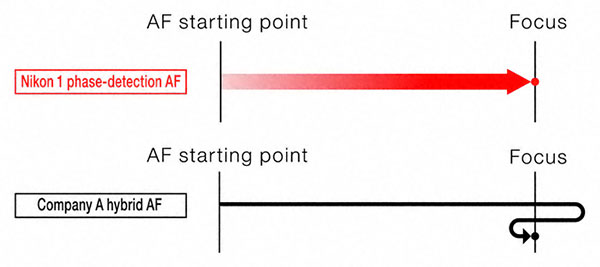
Dave Etchells: So the time resolution of being able to say, "Stop now" instead of saying, "...Uhhhhhh, ok, stop now..." The fact that you can tell it more quickly...
Akihiko Obama: And the frequency really matters in this context. If you want to make a stop at exactly the same position over and over, then the more frequently you actually apply the brakes, the more accurately you can get there. That really matters to us. The worst scenario is that you actually go on further than the stopping point. Then you have to come back.
Dave Etchells: Then you have to come back, and you go too far. <chuckles>
Akihiko Obama: Yeah. And then eventually you will be caught by the police!
<laughter>
Dave Etchells: That's extremely interesting, because I had always thought that with phase-detection autofocus, the camera would just look once and say "Okay, I need you to move to here" and then the lens by itself would move to the indicated focal distance setting. But it sounds like the camera is watching while the lens moves, so it can say "Stop, that's far enough"?
Akihiko Obama: Well, that could be one example, but maybe it would be easier for you to think about the time when the subject is in motion. If the subject stays still, then all you have to do is just to get there. If the subject is constantly in motion, though, you have to send the message to the lens and back. You have to actually keep following the moving subject, because sometimes if the communication is too slow, then once the lens comes to that position where the subject used to be, the subject would have gone. So that's what the fast speed of communication is doing.
Dave Etchells: Ahh... But I keep thinking what Kitaoka-san said about telling it to stop 10 times more often. So when the subject is moving, it's still the case that the camera tells the lens to move, but while it is moving, the camera is still watching and calculating new positions, neh?
Akihiko Obama: Yes.
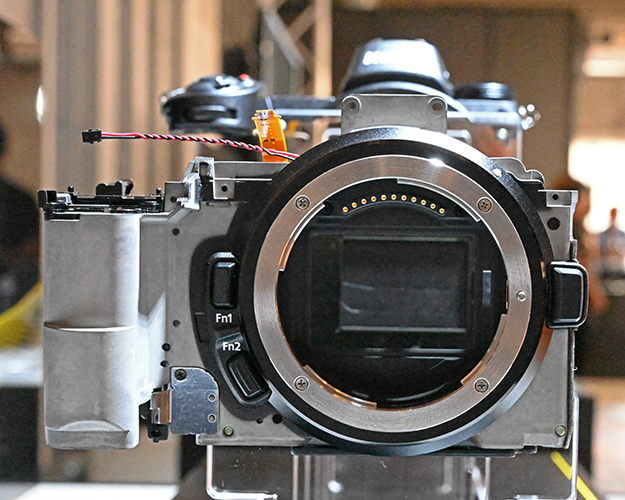
Dave Etchells: Ah, very interesting. And that is different than how traditional PDAF works in SLRs, neh? In an SLR like the Nikon D500 or D5, while the lens is moving, is that autofocus also looking while it moves?
Akihiko Obama: Basically, the principle is the same.
Dave Etchells: Ah! I never knew. I always had the wrong idea about autofocus.
Akihiko Obama: However between the mirrorless and SLR, the timing of the sensing is different. In an SLR, the mirror has to be there; it has to be lowered, otherwise you can't calculate the distance. But with mirrorless, it doesn't really matter. It's constantly calculated.
Dave Etchells: Ah - because mirrorless cameras can always be "looking", they're able to control the lens much more precisely, in cases where the subject is moving rapidly. While there are other challenges with autofocus for mirrorless cameras, this sounds like an area where they actually have an advantage over SLRs.
Changing subjects slightly, the Z-series cameras feel much more video-oriented than Nikon's previous DSLR cameras. For example, both the Nikon Z7 and Z6 models offer Log profiles and 4K recording as well as much faster, smoother video AF than your previous DSLRs. How will this increased focus on video with your Z-series cameras influence future Z-mount lens designs? Could we perhaps see more cinema-specific features, such as mechanically-geared focus/zoom rings, manual aperture rings or smooth iris rings, for example, in future Z-mount lenses?
Takeshi Suzuki/Nikon: Yes, the video function is fully incorporated into this product. Anti-breathing function is there. Also, we're reducing wobbling using phase-detection AF. The proof of the pudding is in the eating, so you should try it.
Dave Etchells: <tries camera>
Takeshi Suzuki: Even if you move the focus then it really doesn't cause any change in size.
Dave Etchells: Ah, right. So that is a new requirement for video in your lens designs. Hai, hai.
[Ed. Note: There are two key points here. First is that the Z-series lenses are designed to minimize 'focus breathing'. This refers to the way that the image size varies with the focus adjustment on some lenses. As you shift focus in or out, the image "breathes" a little, meaning it gets a little larger or smaller. This doesn't matter much for still photography, but can be very distracting in a video. Apparently, all Nikon's new Z-mount lenses are being designed to minimize focus breathing. The second point is about 'focus hunting', which Japanese manufacturers tend to refer to as "wobbling". This refers to the situation where the camera can't settle on a fixed focal distance setting for a stationary object, but instead "hunts" or "wobbles" back and forth, constantly moving from front- to back-focused and back again, rather than settling on a single correct focal setting and staying there. Again, this can be very distracting in a video. While this can be caused by lenses overshooting the desired focus setting, it's more often a function of the body not being able to decide whether the subject is actually in focus or not. It was very common with early mirrorless systems, where the autofocus was based purely on contrast detection. With contrast-detection AF, the camera can only tell whether the subject is in or out of focus by tweaking the focus a little and seeing whether that made the subject more or less sharp. Phase-detect AF, on the other hand, can tell not only whether the subject is in or out of focus, but by how much and in which direction, without twiddling the lens at all. A lot of current mirrorless AF systems use a combination of phase-detect for the primary adjustment and contrast-detect for final, minor tweaks, and the tradeoff between the two seems to be a matter of art and finesse at this point, rather than of absolute science.]
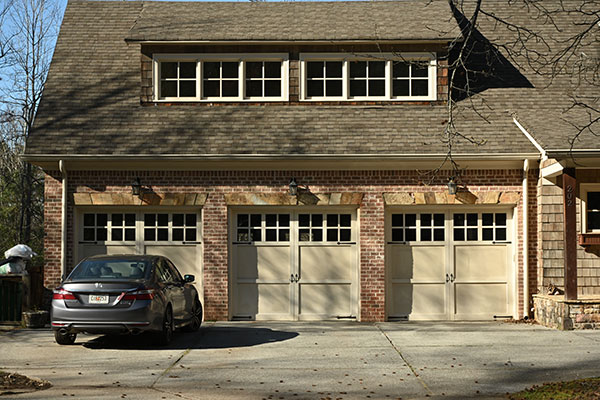
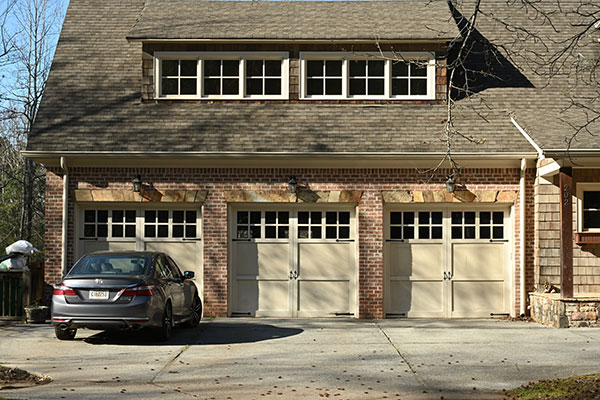
These examples show roughly similar focus changes with a Nikon 24-120mm f/4 lens above, and the new Z-mount 24-70mm lens below, both at 65mm. As you can see, the size of the subject changes dramatically in the 24-120mm shot as we move from far to near focus, while there's very little change in the size with the new Z-mount 24-70mm. This so-called "focus breathing" can be very distracting in video recording, so Nikon's new Z-mount lenses aim to strictly minimize it. The very minimal breathing of the 24-70mm is quite good for a zoom lens. Other Z-mount lenses like the 50mm f/1.2 show no focus breathing at all.
Takeshi Suzuki: Very seamless and there's no [Ed. Note: Our apologies, it wasn't clear what word was being used here] feeling, and quietness. So, all those technologies are embedded and then put into the product for video-oriented reasons. All the S-Line lenses have been designed, always considering video-oriented [requirements].
Dave Etchells: So the new f 2.8 zooms will also have less or no focus breathing, neh?
Takeshi Suzuki: Of course. <laughs>
Dave Etchells: Videographers also like manual aperture rings and things like that. Will we see those features?
Takeshi Suzuki: The multi-control ring is equivalent to the manual aperture.
Dave Etchells: The multi-control ring, ah, hai.
Takeshi Suzuki: Yeah. Why don't you try it?
Dave Etchells: Ah, this is the 24-70, yeah. We haven't seen that before.
William Brawley: Yeah, I was trying to look. I was like "What lens is this?" I was trying to Google it while we've been talking.
<laughter>
William Brawley: I don't recognize the screen. I thought this was an adapter... <pointing to the little data readout on the lens barrel><chuckles>
Takeshi Suzuki: Yeah. Turn it on.
William Brawley: Ah, and it shows the focus depth of field too, like...
Dave Etchells: Oooh, it's actually got a depth of field indicator! Ah, and the actual focus setting. That's really cool.
Takeshi Suzuki: It's already been officially launched. You can actually change the display. Press the button.
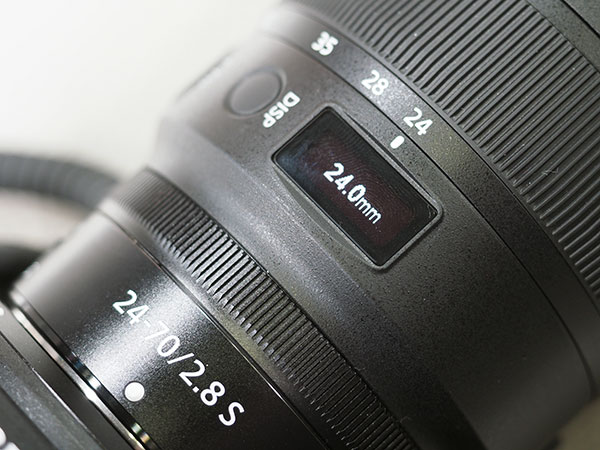
William Brawley: Yeah.
Takeshi Suzuki: That's the focus ring. The inner control ring is to actually change the darkness and lightness of the frame.
William Brawley: Oh, yeah.
Dave Etchells: And it's smooth.
William Brawley: ...which is great for video. Yeah.
Dave Etchells: Although on the display, I change the aperture smoothly but it seems like it still moves in steps on the readout?
Takeshi Suzuki: We can actually give this ring two functions. One is the change of the aperture setting. Another one is the exposure correction.
Dave Etchells: Oh, EV adjust, neh? Right now, it is adjusting aperture. But still, it moves in steps. Can you change that?
Takeshi Suzuki: Well this is actually for the adjustment of still images. So it's only every one-third stop.
Dave Etchells: Ah, so for shutter-priority when shooting video it has continuous aperture, neh?
Takeshi Suzuki: Yes, correct. When you switch to video mode, then the aperture is going to be continuous instead of steps. Just press the button and try it.
Dave Etchells: Ah, OK, I understand. I want to ask something about the way the Z system will affect the F-mount roadmap. Obviously there are still many photographers using Nikon DSLR cameras, and many of them likely intend to use their DSLRs for the foreseeable future. How will the Z system affect future releases of new Nikkor F-mount lenses and Nikon DSLR cameras? Will you continue to develop new F-mount lenses?
Takami Tsuchida: Yeah. So we've been investing our resources into the Z-mount, because we really want to build up a very strong lineup for the Z-series. Having said that, the SLR lenses have quite constant and strong demand from users, especially for the Nikon D750 and the D850. We have a very strong customer base for them too. The SLR lens series continues to be very well received by professionals as well as photography enthusiasts. So, we would like to also focus on the F-mount body and lenses, while keeping a close eye on the market trends. So we'll try to optimize our resource allocation.

Dave Etchells: Kind of related to that, it’s obviously going to take quite a while for the Z mount to mature, and for there to be a wide variety of native lenses available for it. Given that existing F-mount lenses work quite well via the mount adaptor, is it possible that some of the more exotic lens models will be long in coming to native Z-mount, or that they might not ever be replaced with new versions? (We’re thinking of super-teles like the 400mm f/2.8, 600mm f/4, etc, but this might also extend to other less-common models like full-frame fisheyes, tilt-shift lenses, etc.)
Hiroyuki Ishigami/Nikon: Yes, as you just pointed out, building a strong lineup for the Z-mount is our focus, that's something that we've got to do as soon as possible. And there are still missing pieces in the lineup for the Z-mount, so we need to add more down the road. This is where the FTZ adapter [comes in], to complement some of the functions which are missing from the Z-mount line up. Hopefully, our users can use that to compensate for what is missing right now in the lineup of the Z-mount. As for the 400mm or 600mm lenses, these are obviously for professional usage and of course, there's scope for further examination of that market. However, the order of launching new products into the lineup totally depends on the balance of the body launch timing, and also what kind of functions we can actually provide to our end users. We would rather refrain from commenting exactly when in fact such things can happen. [Ed. Note: Of course they won't be drawn into discussion of specifics. I know better than to ask, but there's no harm in trying, sometimes ;-) ]
Dave Etchells: I think we've only got time for one last question, and I'll make it about autofocus. The Z-series has good autofocus, but it's not in the same class as the Nikon D5. How do you intend to improve the autofocus performance moving forward, and will you be able to close that gap with your high-end DSLR cameras?
Naoki Kitaoka: Speaking about how future development will go, it's really hard to answer to that question. However, we already made a public announcement to the wider audience that eye-detection AF is going to be launched through a firmware update. This announcement was made within six months of the launch of the product itself. And we'd like to continue to make additional new feature announcements. So the conclusion, if we are asked about our autofocus strategy, is that an SLR and mirrorless camera each have their own advantages for autofocus, because each has a different way of operating. We would like to improve their competitive edge and then to realize it; we would like to provide additional autofocus functions to both SLR and mirrorless. For example, since DSLR uses the optical finder, it doesn't have any time lag [in viewing the image]. It's pretty much zero, while mirrorless, of course, does have a time lag because the mechanical structure is different from an SLR. But because of that, you can actually keep watching and viewing your subject through the mirrorless camera's viewfinder, because you can constantly keep following the subject with the mirrorless, while the SLR it's more like you [can see the subject] for that very short moment without any time lag. Each one of them has its own advantages, and we would like to improve the benefit of each, by providing better autofocus functions respectively.
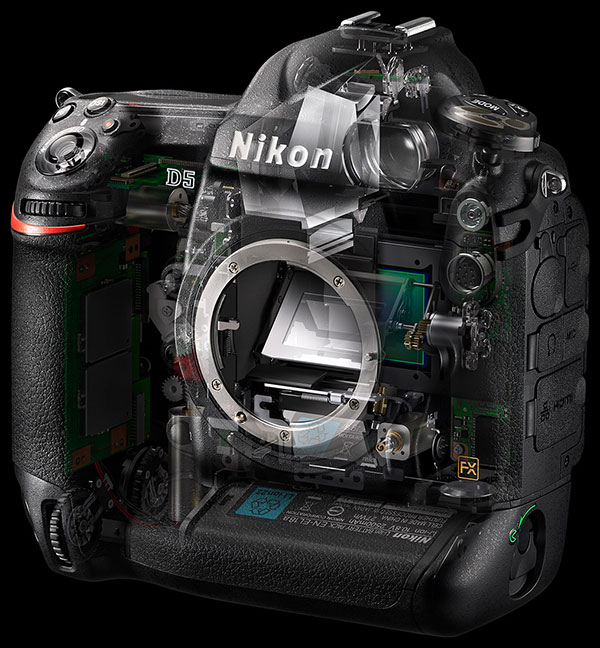
Dave Etchells: Just in terms of using a camera to shoot sports though, the current feeling is that the D5 is better at tracking subjects. Purely in terms of tracking performance, do you think mirrorless will it catch up, and how long will it take, do you think?
Naoki Kitaoka: We are in the middle of the process of trying to catch up with the tracking functions that the D5 currently provides. We believe technically, with both hardware and software, it is possible to do so in the near future. However, the key difference between them is whether it is an optical finder or a liquid crystal, and that eventually causes the ultimate difference between them.
Dave Etchells: So even if very small, there's necessarily always some delay for a mirrorless viewfinder.
Naoki Kitaoka: Correct. And that teeny, tiny little delay can be recognizable by the best of the best, by professional sports shooters. I personally don't even feel it though.
<laughter>
Dave Etchells: Yeah, I'm not at the experience level where the difference in lag between an EVF like the Nikon Z6 or Z7's and a purely optical viewfinder like that on the Nikon D850 or D5 would make any difference in my shooting, either :-0
Well, I think that covers all our questions, and I see we're out of time in any case. Domo arigato gozaimasu. [Ed. Note: That's Japanese for "Thank you very much."]
Naoki Kitaoka: Thank you also!
Summary
Another interesting discussion, as always; I really enjoy these interviews, and appreciate that the manufacturers make such high-level engineers and executives available for them. :-)
As with other companies I spoke with at CP+, Nikon disagreed with the gloomy projections of Canon's CEO and Chairman Fujio Mitarai, who said that he expected the camera market to contract by half over the next 2-5 years. Some readers have pointed out that he was probably talking about total unit sales of just cameras (not including lenses), and was also talking about units shipped vs their value. When you look at CIPA's recent numbers for the total value of camera and lens shipments over the last couple of years, they paint a much more optimistic picture, with dollar value actually growing since 2016. Nikon said they expect some contraction, but it seems not as much as Mitarai was expecting.
Nikon's new 14-30mm f/4 Z-mount lens is a pretty remarkable optic; it's amazingly compact, and even more surprisingly has a very flat front element, allowing the use of threaded filters. Talking about this lens with the engineers, it was clear how the large diameter and short flange distance of the Z-mount help make it possible. This was the clearest example I've seen to date of how the new full-frame mirrorless mounts enable entirely new lens designs.
I also learned something new about autofocus, namely that the phase-detect pixels can continuously monitor subject distance while the lens is moving its focus elements. Combined with the very high-speed body/lens communication the Z-mount provides, this can potentially lead to much better tracking performance for moving subjects.
We also talked about how a focus on video affects Nikon's product design, and learned that a key goal of theirs with the new Z-mount lenses is to reduce 'focus breathing' to a minimum. (And of course to provide smooth, silent focus actuation, but I knew about those points already. I hadn't previously been aware of how much attention lens designers paid to focus breathing for video lenses, though.)
Finally, I asked about overall AF performance, and if they felt that their mirrorless cameras could ever deliver the kind of rock-solid, high-speed AF that the D5 does. The answer was yes, it's just a matter of time. (And actually, mirrorless should deliver a lot of additional capabilities that just weren't possible with old-style DSLR AF systems. As one example, eye-tracking AF will be coming to the Z Series soon.)
What do you think? Any questions? Any (polite) comments? Leave them below; as usual with these interview pieces, I'll try to monitor the comments thread and respond to any questions as best as I'm able.